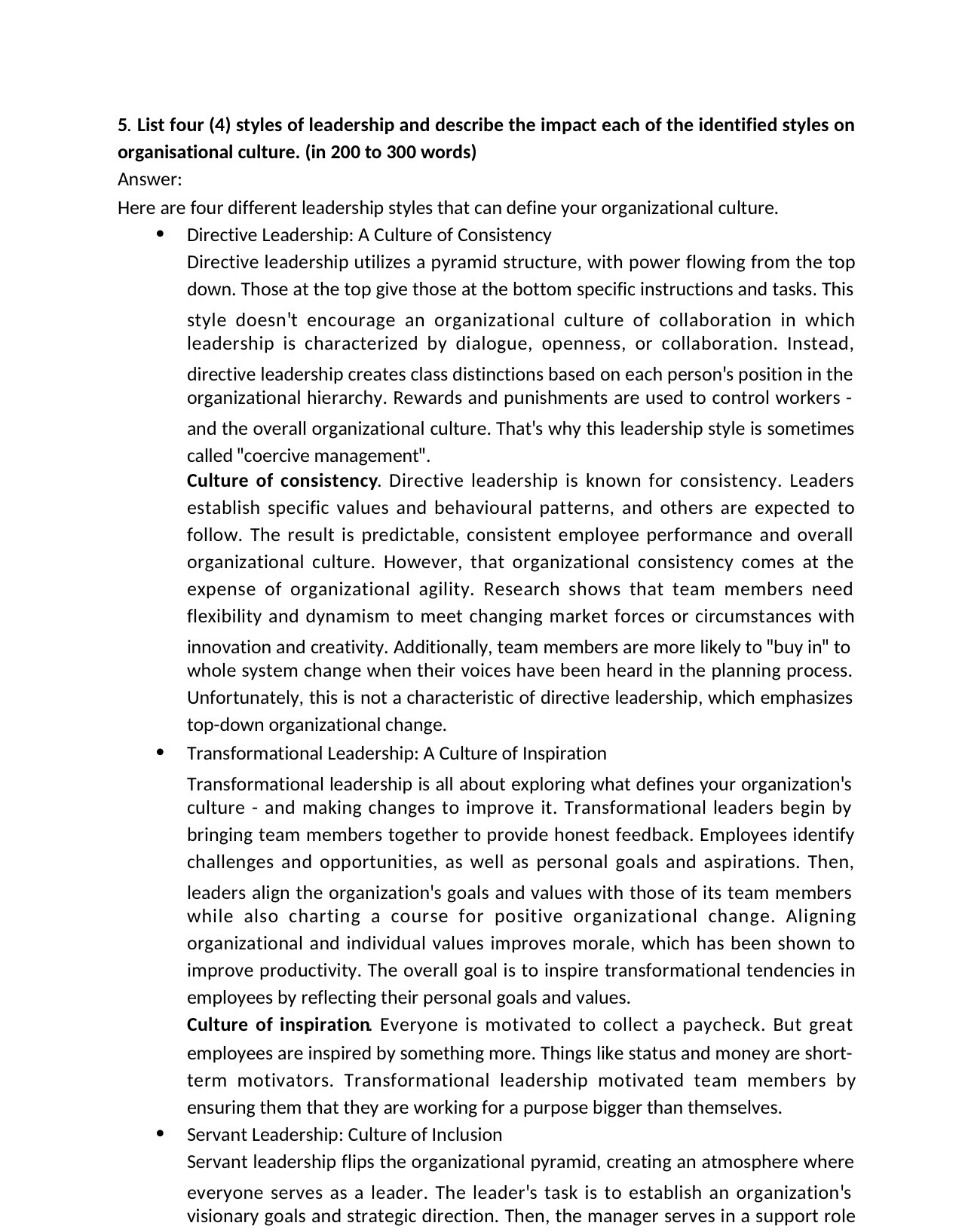5. List four {4) styles of leadership and describe the impact each of the identified styles on organisational culture. (in 200 to 300 words) Answer: Here are four different leadership styles that can dene your organizational culture. Directive Leadership: A Culture of Consistency Directive leadership utilizes a pyramid structure, with power flowing from the top down. Those at the top give those at the bottom specific instructions and tasks. This style doesn't encourage an organizational culture of collaboration in which leadership is characterized by dialogue, openness, or collaboration. Instead, directive leadership creates class distinctions based on each person's position in the organizational hierarchy. Rewards and punishments are used to control workers - and the overall organizational culture. That's why this leadership style is sometimes called "coercive management". Culture of consistency. Directive leadership is known for consistency. Leaders establish specific values and behavioural patterns, and others are expected to follow. The result is predictable, consistent employee performance and overall organizational culture. However, that organizational consistency comes at the expense of organizational agility. Research shows that team members need flexibility and dynamism to meet changing market forces or circumstances with innovation and creativity. Additionally, team members are more likely to "buy in" to whole system change when their voices have been heard in the planning process. Unfortunately, this is not a characteristic of directive leadership, which emphasizes top-down organizational change. Transformational Leadership: A Culture of Inspiration Transformational leadership is all about exploring what defines your organization's culture - and making changes to improve it. Transformational leaders begin by bringing team members together to provide honest feedback. Employees identify challenges and opportunities, as well as personal goals and aspirations. Then, leaders align the organization's goals and values with those of its team members while also charting a course for positive organizational change. Aligning organizational and individual values improves morale, which has been shown to improve productivity. The overall goal is to inspire transformational tendencies in employees by reflecting their personal goals and values. Culture of inspiration Everyone is motivated to collect a paycheck. But great employees are inspired by something more. Things like status and money are short- term motivators. Transformational leadership motivated team members by ensuring them that they are working for a purpose bigger than themselves. Servant Leadership: Culture of Inclusion Servant leadership flips the organizational pyramid, creating an atmosphere where everyone serves as a leader. The leader's task is to establish an organization's visionary goals and strategic direction. Then, the manager serves in a support role







